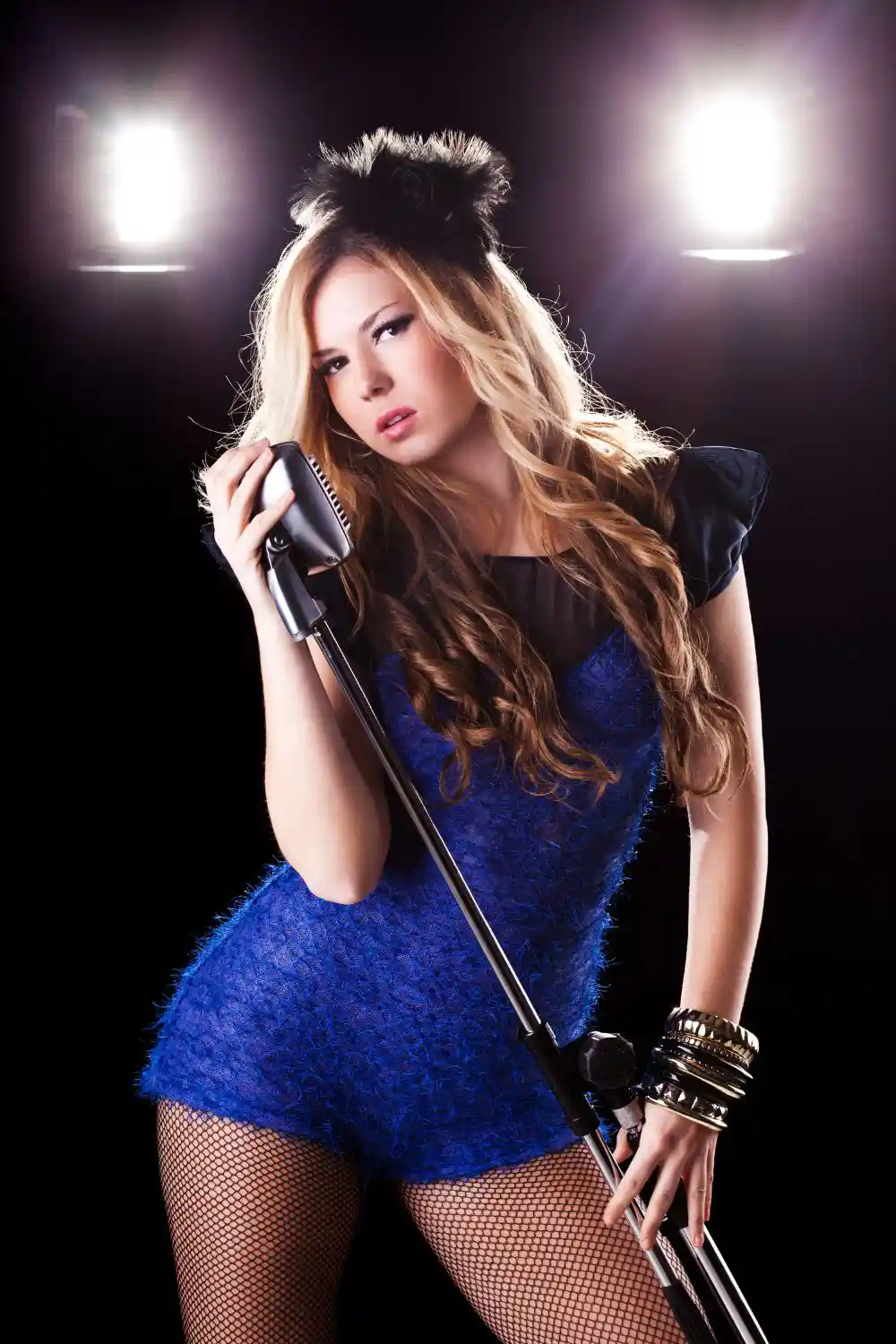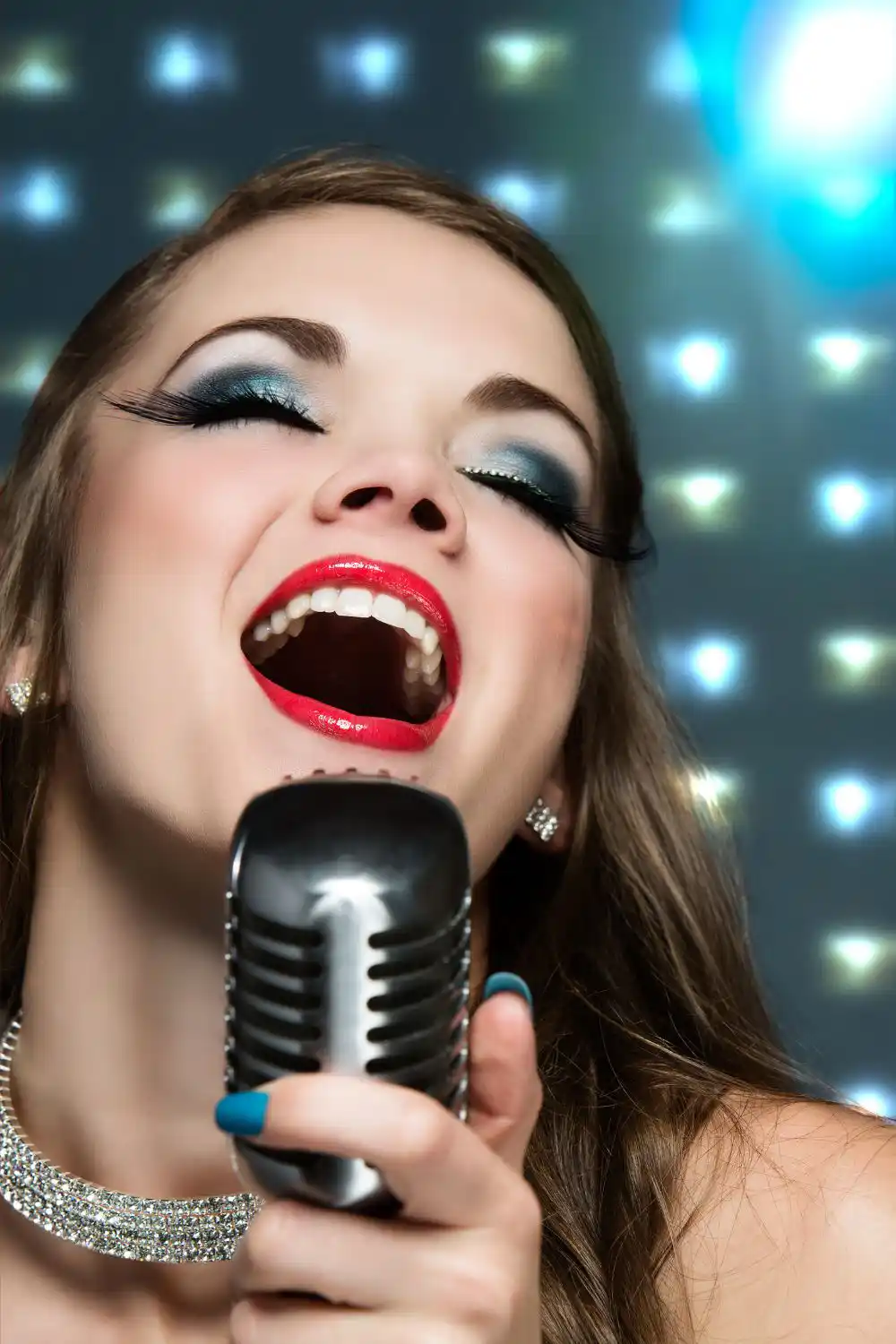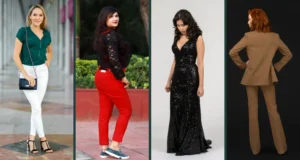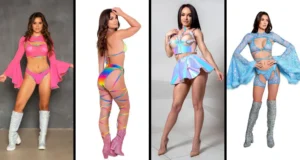Leotards have come a long way from being simple gym wear to dictating glamorous fashion statements on popular singers’ stages. The close-fitting one-piece outfit has always been associated with active strength and flexibility, popularized by gymnasts and ballerinas. But singers like Beyonce, Rihanna, and Taylor Swift have sportingly donned figure-hugging gym attire over the years, even though singing requires no cartwheels or handstands.
The simple answer seems to be – leotards exude power and confidence. The fitted bodysuit beautifully accentuates a woman’s curves while also giving her a no-nonsense, all-business image.
For singers, who command center stage under bright spotlights, the leotard provides maximum impact in minimum fabric. Instead of hiding behind voluminous dresses, the leotard-clad singer’s project empowered femininity through their bodily shapes on display.
The tight garment unapologetically embraces a woman’s form, making unmissable statements about her feminine strength. So when pop icons like Beyonce slip into leotards for performances, they capture eyeballs and communicate charm and authority, just like how female athletes in leotards command respect for their abilities.
The outfit choice reveals the singers as unfazed, determined individuals who wish to grab attention through confidence rather than coyness.
Why do female singers wear leotards?
Female singers wear leotards for various reasons, including their association with athleticism and sexuality, their functionality as exercise garments, and their popularity in the fashion industry. Here are all the reasons why female singers wear leotards.
To allow flexibility for singers and dancers
Female singers and dancers wear leotards mainly to enable flexibility of movement during their performances. They are designed to provide a close, second-skin fit while keeping the wearer comfortable with its breathable fabric.
Leotards are made of spandex and other stretchy materials and offer dancers and singers unrestricted movements. The tight fit of a leotard helps hold clothing in place so it does not bunch up or obstruct movement. This freedom of motion is essential for singers and dancers as they gesture expressively and maneuver across the stage.
Besides being snug, leotards are also lightweight and breathable. This comfort is important for performers who engage in physically demanding routines. Leotards efficiently wick moisture away from the skin to keep singers and dancers dry as they move vigorously on stage.
In essence, leotards provide the form-hugging coverage and adaptable fit that female singers and dancers look for in performance wear. A leotard’s flexibility, breathability, and comfort allow performers to execute complex movements and dance steps easily and confidently.

To create stylish images for female singers
Female singers often wear leotards to create a stylish and fashionable image on stage. Leotards can help project an aura of confidence and power for performers through their form-fitting silhouette.
Leotards come in various styles to suit different preferences. Women can choose between tight-fitting and loose designs based on their requirements. They can range from plain to embellished with sequins or rhinestones for a glamorous look. Decorated leotards add an element of flair and visual interest during performances.
In recent years, leotards have gained popularity beyond their traditional use. Famous pop singers like Lady Gaga, Miley Cyrus, and Beyonce wear leotards as a fashion statement. Their trendsetting style has helped elevate the leotard from a gym garment into mainstream fashion.
For female singers, a well-chosen leotard can draw attention to their strength and personality as performers. Form-fitting leotards emphasize a woman’s physique, while loose ones project a casual yet on-trend style. Either style helps female musicians portray an image that captures their creative spirit and individuality on stage.
The versatility and fashionability of leotards give female singers various options to complement their talent and craft. The right leotard allows women performers to feel confident and stylish while expressing themselves through music.
To project a sexy image
For some female singers, wearing a leotard during stage performances aims to showcase their figure and project a sensual aura. Leotards, with their form-fitting cut, highlights a woman’s curves and can draw attention to features like the hips and bust. The snug material leaves little to the imagination for a more revealing outfit.
However, not all female singers wear leotards to appear sexy. Some prefer more modest styles that cover more skin. The leotard trend among female pop stars also stems from its popularity as a fashion statement rather than explicitly for sex appeal.
Leotards have become common in the wardrobes of female pop stars in the last decade. Many women in pop music have embraced the leotard trend for stage style. Yet, the exact motivation for wearing leotards varies among performers.
For certain female singers, leotards serve as a mechanism to highlight their sex appeal on stage and create a bolder persona. But many other women choose leotards based on fashion, comfort, or styling preferences that have little to do with sexiness. Individual performances dictate how female singers wield the leotard for style and image.
As a symbol of empowerment
Many female singers choose to wear leotards during performances to showcase a sense of empowerment and self-confidence. By donning a form-fitting leotard, these women express that they feel comfortable and assured in their own skin.
Wearing a revealing garment like a leotard allows female singers to demonstrate that they are not bound by traditional expectations of modesty for women. Leotards enable women musicians to command the stage with strength and prowess unhindered by restrictive clothing.
The tight-fitting cut of a leotard emphasizes a woman’s physical shape and may highlight her athletic ability for dancing or other movements on stage. For some singers, displaying their fitness and form in a leotard represents a show of empowerment through their own bodies.
By wearing leotards during performances, female artists assert that they control their womanhood and sexuality on their own terms. The leotard symbolizes the singer’s comfort with herself as a woman and an expression of inner strength and confidence.
Overall, female singers reach for leotards to project an image of empowerment, agency, and self-assuredness through bodies that are unrestricted by constrictive clothing conventions traditionally forced upon women.
For comfort during performances
Many female singers wear leotards as their stage costumes because of how comfortably they move around in. They are well suited for the demands of energetic performances that involve lots of dancing and gesture.
The form-fitting design and stretchy material of leotards provide support for female singers as they maneuver on stage. Leotards stay put and do not slide or fall, preventing potential wardrobe malfunctions. The snug fit also eliminates unnecessary bulk that could hinder movements.
Leotards are also made from breathable fabrics like spandex and cotton for comfort. These materials help keep singers cool and dry as they exert themselves during performances. The lightweight design of leotards further adds to the sense of ease for women musicians.
Ultimately, leotards give female singers the flexibility they need to express themselves through movement and dance. The form-fitting yet comfortable cut of leotards supports and flatters a woman’s figure while enabling the full range of gesticulation.
This superior comfort and functionality, combined with the freedom of motion, make the leotard an ideal choice of stage costume for many female singers focused on mobility during energetic live shows.

Due to their association with athleticism
Many female singers choose to wear leotards for performances because of the garment’s deep-rooted association with athleticism and physical prowess. With a history in dance and gymnastics, the leotard conveys a sense of fitness, agility, and grace.
Leotards originated as the primary female uniform in dance and gymnastics since they facilitate mobility and range of motion. They are designed to be form-fitting while remaining breathable and lightweight for comfort during strenuous activity.
Leotards enable dancers and athletes to perform unencumbered extended sequences of fluid movements and gestures. The close fit of leotards supports the body and eliminates the bulk that would otherwise inhibit flexibility.
For female singers, wearing a leotard evokes the aura of an athlete in control of her body. The sight of a woman commanding a stage while clad in a leotard draws on a lineage of femininity expressed through mastery of physical form.
Overall, the longstanding association of leotards with dance and sports is a significant factor in why female singers wear the garment during performances. The leotard carries cultural meanings of female strength, grace, and physicality that empower women musicians on stage.
To embody its feminist associations
Many female singers choose to wear leotards as their stage costumes partly due to the garment’s historical ties to feminism and female empowerment.
Since the 1970s, leotards have become a symbol of feminist activism and women’s liberation through their adoption by performers determined to assert independence through their bodies. The tight-fitting leotard was seen as a means to showcase female physicality and strength while challenging male-dominated stereotypes of acceptable clothing for women.
The ability of leotards to highlight a woman’s curves, muscles, and agility came to represent a form of personal empowerment built upon self-confidence in one’s own body as a site of agency and power. Women asserted ownership and pride over their physical selves by wearing the leotard as an act of rebellion against restrictive conventions.
Today, some clothing companies create leotards emblazoned with pro-feminist slogans as a way to capitalize on the garment’s role in fostering female empowerment.
For female singers, wearing a leotard channel the centuries of feminist struggle condensed into a single piece of stretchy fabric. The leotard is a social signifier of the performer’s alignment with movements that seek to liberate women by embracing their bodies rather than disavowing them.
As a symbol of power and sexuality
For many female singers, the leotard carries symbolic meaning beyond its practical functionality. The tight-fitting garment can represent a woman’s sense of power and sexuality when worn on stage.
The revealing cut of a leotard highlights a female singer’s curves and physique, imbuing the wearer with a sense of sensuality and sexuality. The form-fitting design also showcases physical strength and fitness, allowing the garment to symbolize female empowerment and agency for performers.
By donning the leotard, female singers align themselves with a lineage of feminism that reclaimed the female body as an empowerment site. Though not all leotards are worn for sex appeal, the garment challenges traditional notions of modesty for women and encourages self-acceptance of the physical form.
Overall, the leotard is a multi-faceted symbol for different female singers based on individual motivations and stylistic choices. For some, the leotard symbolizes a celebration of sensuality and sexuality, while for others, it represents empowerment through physical confidence and strength. Though interpretations vary, the common thread lies in claims of ownership over definitions of womanhood made visible through the body.
The leotard distills complex ideas about gender, power, and sexuality into a simple yet potent image when worn by female performers commanding the stage. It becomes a means of self-expression that allows women to inhabit their own definitions of womanhood by representing the physical form.

Summary
Leotards have evolved from gym wear to glamorous fashion statements. Female singers wear leotards for flexibility, stylish images, and to project a sexy or empowered image.
Leotards offer comfort during performances and are associated with athleticism and feminist ideals. They allow singers to move freely, showcase their curves, and command the stage.
Leotards embody a sense of empowerment and symbolize control over womanhood. They provide comfort, support, and freedom of movement, making them ideal for energetic performances.
Leotards carry cultural meanings of strength, grace, and physicality. They have historical ties to feminism and women’s empowerment. Wearing a leotard is a statement of rebellion against restrictive clothing conventions.
Leotards represent the alignment with movements that seek to liberate women. Overall, leotards give female singers the confidence and flexibility to express themselves on stage while embodying empowerment and challenging traditional norms.
FAQ
Who started wearing leotards?
Leotards were originally designed for male dancers but were later popularized by acrobat Jules Leotard in the 19th century. Nonetheless, leotards were truly popularized by gymnasts who started wearing them in the 1940s and 1950s.
Why does Wonder Woman wear a leotard?
The leotard itself was chosen because it allowed for ease of movement and flexibility, which was important for a superhero who was both a fighter and an acrobat. Over time, the leotard’s design has been modified and updated, but it remains a key component of Wonder Woman’s iconic look.
When did Beyonce start wearing leotards?
Beyonce has been known to wear leotards throughout her career. She has been photographed wearing leotards as early as the late 1990s and has continued wearing them in various performances and music videos. Her most iconic leotard looks include the black-and-white striped number she wore in the “Single Ladies” music video and the sequin-covered bodysuit from her Made in America Festival performance in 2015.
Did people wear leotards in the 80s?
Yes, people did wear leotards in the 80s. Leotards were part of the popular workout and dancewear in the 80s. They were often worn in bright, neon colors and paired with leg warmers, sweatbands, and other accessories. The aerobics craze of the 1980s made leotards a popular fashion choice, as they allowed for ease of movement during exercise.
What is worn under a leotard?
Wearing underwear under a leotard is unnecessary, especially for gymnasts or dancers. This is because leotards are designed to provide support and coverage, and wearing underwear can cause discomfort or create visible lines. However, if someone prefers to wear underwear for hygiene or personal reasons, they can wear briefs specifically designed to be worn under a leotard. Additionally, some dancers or gymnasts may choose to wear a sports bra or other supportive undergarments under their leotard for added support and comfort.



